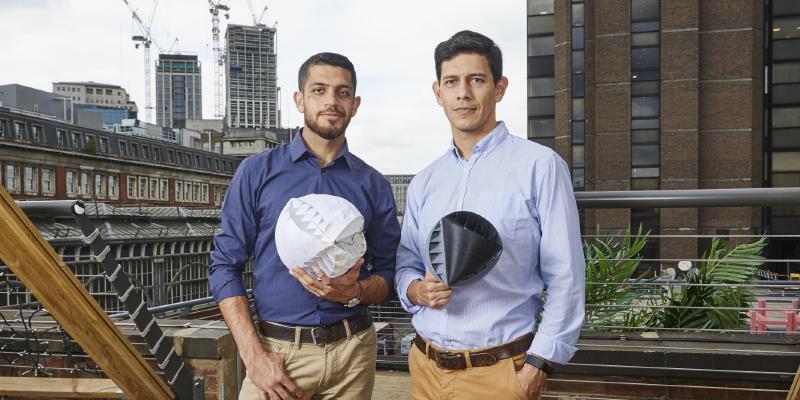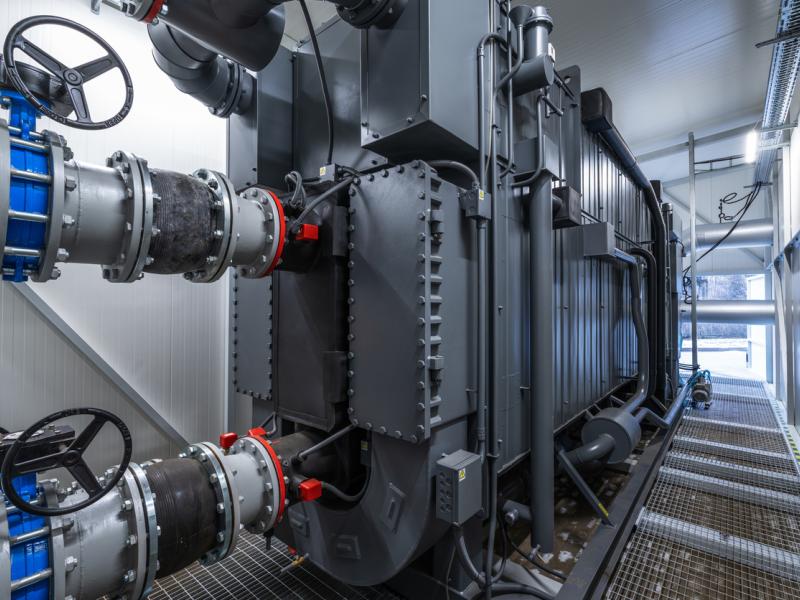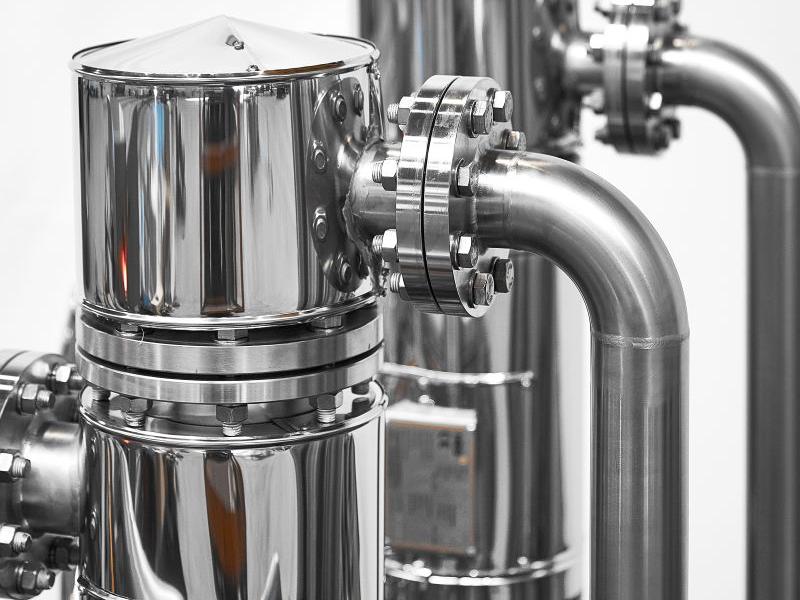Inspired by a NASA space rover, Nicolas Orellana from Chile and Yaseen Noorani from Kenya set out to harness urban wind with an inventive new type of turbine.
The two are International Innovation MSc students at Lancaster University (England) and, in response to a deposition that stated that global issues increasingly demand collaborative, cross-cultural responses, set out to harness urban wind with an inventive new type of turbine.
Their work has won them a James Dyson Award. The annual grant gives students and recent graduates of engineering and design the opportunity to show their problem-solving inventions on a global stage. The brief is simple; design something which solves a problem, big or small.
The premise behind the duo’s project – O-Wind Turbine – is that taller cities are built, the windier they become. In the hunt for renewable sources of power generation this powerful and plentiful resource is left untapped largely because traditional wind turbines only capture wind travelling in one direction. This means they are very inefficient in cities where the wind is unpredictable and multi-directional.
When wind blows through cities it becomes trapped between buildings, is dragged down to the street and is pushed up into the sky. This catapults wind into chaos, which renders conventional turbines unusable. Using a simple geometric shape, O-Wind Turbine is designed to utilise this powerful untapped resource, generating energy even on the windiest of days.
Orellana first became interested in the challenge of multidirectional wind after studying NASA’s Mars Tumbleweed Rover. Six feet in diameter, this inflatable ball was designed to autonomously bounce and roll like tumbleweed, across Mars’ surface to measure atmospheric conditions and geographical location. Like conventional wind turbines, it was powered by unidirectional wind blows which severely impaired the rover’s mobility when faced with obstructions, often throwing it off course and resulting, ultimately, in the failure of the project.
By exploring the limitations of the Tumbleweed, Orellana’s three-dimensional wind turbine technology was born. Orellana and Noorani soon identified how cities could use this technology to harness energy to produce electricity.
Harry Hoster, Director of Energy Lancaster at Lancaster University advised and supported the team in the design process.
“When the two students first approached us about test facilities for a new wind turbine design, we first thought it would just be the 23rd variation of some plain vanilla system,” he said. “When they humbly showed their video and their prototype, however, we were, excuse the pun, blown away. Only holding it in your hands and playing with it gives you a chance to understand what their new device actually does and how, if things go right, its ability to capture any random breezes will take urban energy harvesting to another level.”
How does O-Wind
Turbine work?
O-Wind Turbine is a 25cm sphere with geometric vents that sits on a fixed axis and spins when wind hits it from any direction. When wind energy turns the device, gears drive a generator which converts the power of the wind into electricity. This can either be used as a direct source of power, or it can be fed into the electricity grid. Orellana and Noorani aim for O-Wind Turbine to be installed to large structures such as the side of a building, or balcony, where wind speeds are at their highest.
Orellana said that he hoped that O-Wind Turbine will improve the usability and affordability of turbines for people across the world. “Cities are windy places, but we are currently not harnessing this resource. Our belief is that making it easier to generate green energy, people will be encouraged to play a bigger own role in conserving our planet. Winning the international James Dyson Award has validated our concept. The attention we’ve received so far has been humbling and given us the confidence to see the development of this concept as a future career. Already we are in discussions with investors and we hope to secure a deal in the coming months.”
Wind power in cities
Cities in the UK like London and Leeds have historically been low-rise until recently, however increased winds due to skyscrapers, is increasingly becoming an issue. In 2015 the Walk Talkie building on 20 Fenchurch Street was accused of creating a wind tunnel that was blowing commuters off the curb. Cautious of the impact of wind in cities, the City of London has created a policy framework to govern wind effects from tall buildings.
Over half of the world’s population now live in cities according to the UN, a number which is growing as more and more nations urbanise rural areas and densify their towns. Chicago, the home of the world’s first ever skyscraper, is widely known as ‘the windy city’. Wellington also has its reputation with some reports saying our capital is the world’s windiest city. Punta Arenas in Chile, also makes the list as one of the world’s windiest cities.
The Mars
Tumbleweed Rover
The idea of sending a spherical, wind-propelled vehicle (or “Mars Ball”) to the Red Planet was originally conceived in 1977 by Jacques Blamont of NASA’s Jet Propulsion Laboratory (JPL) and the University of Paris. Since then the concept evolved in the Mars Tumbleweed rover. This is a concept for a lightweight, spherical, deployable structure, with a configuration that maximises drag to capture the Martian wind for mobility and extended mission duration. Its core purpose is to survey the Red Planet, to provide vital information that could improve future exploration.
See the O-Wind Turbine HERE






